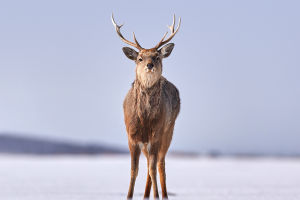In recent years, the world has begun to warm, and global warming is a phenomenon related to nature. It will bring many bad effects, making the glaciers in the Arctic melt and the permafrost melt, resulting in the reduction of the living space of polar bears .
Since people burn fossil fuels such as oil, coal, etc., or cut down forests and burn them, a large amount of carbon dioxide is produced, or greenhouse gases, which cause the earth's temperature to rise, the greenhouse effect.
When the greenhouse effect continues to accumulate, the energy absorbed and emitted by the atmosphere system is unbalanced, which leads to the rise of temperature and the phenomenon of global warming.
Fish, amphibians, and reptiles are called ectotherms because they are unable to actively regulate their body temperature, which is influenced by ambient temperature. Warming caused by climate change will cause the body temperature of these organisms to rise.
In addition, after global warming, extreme events such as heat waves can cause heat stress in ectothermic animals and these animals will age faster and their reproductive function will decline.
Besides,global warming is causing the Arctic Ocean ice to shrink, which has a dramatic negative impact on polar bears' daily lives, forcing them to expend more energy while hunting and depriving them of places to rest.
Polar bears only seek food on the surface of ocean ice. On the ice, their snow-white hides help them sneak up behind the ice, undetected by seals resting on the ice. If there is no ice, the polar bear has no camouflage, and it has almost no chance of hunting seals, which will starve it for a long time.
If left unchecked, within a few years, the polar bear population will shrink to extremely low levels, or even endangered.
Global warming will melt glaciers and permafrost, and rise sea levels, which not only endangers the balance of natural ecosystems, but also threatens human survival.
Due to the increase of continental temperature due to the emission of terrestrial greenhouse gases, the temperature difference between the continent and the ocean has become smaller, and the air flow has slowed down, and the smog cannot be blown away in a short time.
So what can we do in the face of global warming?
1. Develop clean energy and renewable energy
Wind energy, solar energy, and tidal energy are all clean energy sources. Compared with coal and oil resources, they are renewable, so there is no need to worry about resource exhaustion.
What's more, they are environmentally friendly and don't emit things that are bad for the environment, helping to control global warming.
2. Develop circular economy to maximize energy utilization.
The development of circular economy is the most effective way to realize energy saving and emission reduction from the source. For example, the ash after incineration of domestic waste is used as the raw material for cement production.
It is also possible to establish an industrial park with reasonable and efficient utilization of copper, iron and sulfur resources. Turn the burned crop straw into environmentally friendly products. These can greatly promote energy conservation and emission reduction.
3. Use ecosystems to sequester carbon
Forests are the main body of terrestrial ecosystems and play an important role in the global carbon cycle and regulation of climate change. Using plant photosynthesis can improve the carbon absorption and storage capacity of the ecosystem, thereby reducing the concentration of carbon monoxide in the atmosphere.
Therefore, increasing the total amount of forests, improving forest quality can all slow down the trend of global warming.
4. Advocate low-carbon life and green travel.
People can use low-carbon, green and environmentally friendly travel methods such as walking and cycling to reduce carbon dioxide emissions, which can not only maintain personal health, but also achieve the purpose of energy saving and emission reduction. Let's do something from right now.


